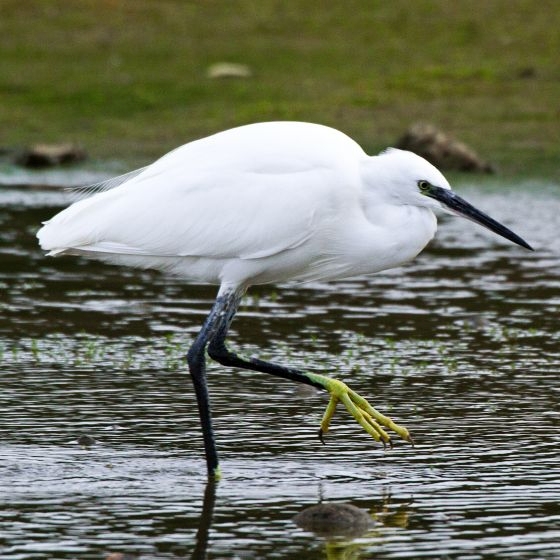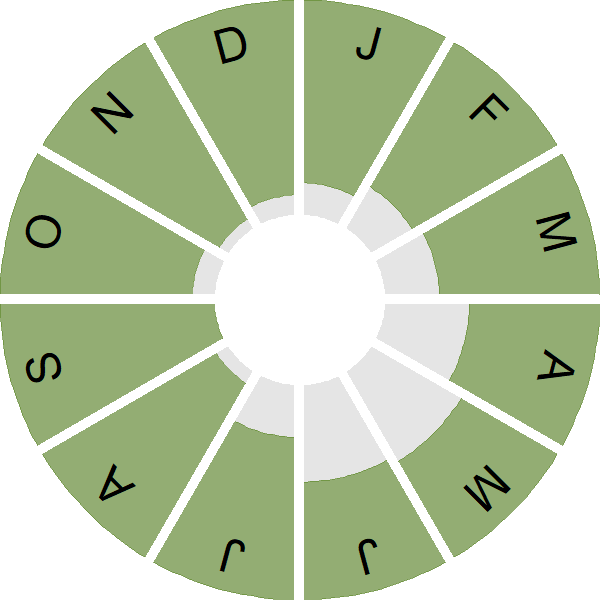Little Egret

Introduction
With its yellow feet, which are used to flush prey when feeding in shallow water, the Little Egret is a distinctive member of the heron family.
Little Egrets first bred in Britain in 1996 and since then have successfully colonised much of southern Britain and Ireland. Most of the breeding colonies have been established within existing Grey Heron colonies, the two species nesting alongside one another.
The winter distribution is also currently restricted to the southern half of Britain & Ireland, despite the fact that young birds are known to move some distance from their natal site.
- Our Trends Explorer gives you the latest insight into how this species' population is changing.

Key Stats
Identification
ID Videos
This section features BTO training videos headlining this species, or featuring it as a potential confusion species.
Little Egret and Great White Egret
Cattle Egret
Songs and Calls
Call:
Flight call:
Other:
Status and Trends
Conservation Status
Population Change
Until the 1980s the Little Egret was a very scarce migrant to Britain, especially as an overshoot on spring passage. Since then, its status has utterly changed. Following a rapid build-up of wintering birds, the first breeding pair ever in the UK was found in Dorset in 1996 (Lock & Cook 1998, Musgrove 2002). By 2001 the number of breeding pairs had passed 100 and in 2015 it passed 1,000 pairs for the first time (Holling & RBBP 2017). Most of these birds remain over winter and are joined by additional birds from the Continent. The primary source of trend data is the nest counts collated by RBBP, many of which have been submitted via the BTO Heronries Census. This trend is matched by the BBS trend and also by the trend in winter numbers which rose rapidly until 2008/09 then fell slightly before starting another rise (WeBS: Frost et al. 2020). There has been an increase across Europe since 2000 (PECBMS: PECBMS 2020a>)
Though previously amber listed through its concentration at a few key breeding sites, the species was moved to the UK green list in 2015 (Eaton et al. 2015).
Distribution
Since first breeding in the UK in 1996
Occupied 10-km squares in UK
or view it on Bird Atlas Mapstore.
or view it on Bird Atlas Mapstore.
European Distribution Map
Distribution Change
Distribution change for Little Egret is exclusively a picture of gains, as in previous atlases the species was essentially a rare vagrant.
Change in occupied 10-km squares in the UK
or view it on Bird Atlas Mapstore.
or view it on Bird Atlas Mapstore.
Seasonality
Little Egret is a year-round resident, recorded on up to 10% of lists.
Weekly pattern of occurrence
The graph shows when the species is present in the UK, with taller bars indicating a higher likelihood of encountering the species in appropriate regions and habitats.

Movement
Britain & Ireland movement
Foreign locations of birds ringed or recovered in Britain & Ireland
Dots show the foreign destinations of birds ringed in Britain & Ireland, and the origins of birds ringed overseas that were subsequently recaptured, resighted or found dead in Britain & Ireland. Dot colours indicate the time of year that the species was present at the location.
- Winter (Nov-Feb)
- Spring (Mar-Apr)
- Summer (May-Jul)
- Autumn (Aug-Oct)

European movements
EuroBirdPortal uses birdwatcher's records, such as those logged in BirdTrack to map the flows of birds as they arrive and depart Europe. See maps for this species here.
The Eurasian-African Migration Atlas shows movements of individual birds ringed or recovered in Europe. See maps for this species here.
Biology
Productivity and Nesting
Nesting timing
Egg measurements
Clutch Size
Survival and Longevity
Survival is shown as the proportion of birds surviving from one year to the next and is derived from bird ringing data. It can also be used to estimate how long birds typically live.
View number ringed each year in the Online Ringing Report.
lifespan
Survival of adults
Survival of juveniles
Biometrics
Wing length and body weights are from live birds (source).
Ring Size
Classification, names and codes
Classification and Codes
- Order: Pelecaniformes
- Family: Ardeidae
- Scientific name: Egretta garzetta
- Authority: Linnaeus, 1766
- BTO 2-letter code: ET
- BTO 5-letter code: LITEG
- Euring code number: 1190
Alternate species names
- Catalan: martinet blanc comú
- Czech: volavka stríbritá
- Danish: Silkehejre
- Dutch: Kleine Zilverreiger
- Estonian: siidhaigur
- Finnish: silkkihaikara
- French: Aigrette garzette
- Gaelic: Corra-gheal-bheag
- German: Seidenreiher
- Hungarian: kis kócsag
- Icelandic: Bjarthegri
- Irish: Éigrit Bheag
- Italian: Garzetta
- Latvian: zida garnis
- Lithuanian: mažasis baltasis garnys
- Norwegian: Silkehegre
- Polish: czapla nadobna
- Portuguese: garça-pequena-europeia / garça-branca
- Slovak: beluša malá
- Slovenian: mala bela caplja
- Spanish: Garceta común
- Swedish: silkeshäger
- Welsh: Crëyr Bach
Research
Causes of Change and Solutions
Causes of change
There is little good evidence available regarding the drivers of the breeding population increase in this species in the UK.
Further information on causes of change
There is little good evidence available regarding the drivers of the breeding population increase in this species in the UK. However, the initial rapid increases following colonisation may have been aided by lack of intraspecific competition and the ability of this species to exploit a previously unoccupied habitat.
It is also possible that climate change has aided the colonisation of this species by increasing the probability that birds survive over winter. It is notable that the BBS index met a temporary small setback between 2007 and 2012, which was probably the result of unusually cold winter weather, to which the species is susceptible (Holt 2012).
Information about conservation actions
This recent colonist is currently increasing its abundance and range in the UK, and hence no specific conservation actions are currently required. Actions to maintain and create wetland habitats are also likely to benefit this species. Little Egrets often nest in heronries alongside Grey Herons (and sometimes other species); hence actions to ensure that key sites are protected and to prevent disturbance may therefore also be helpful.

